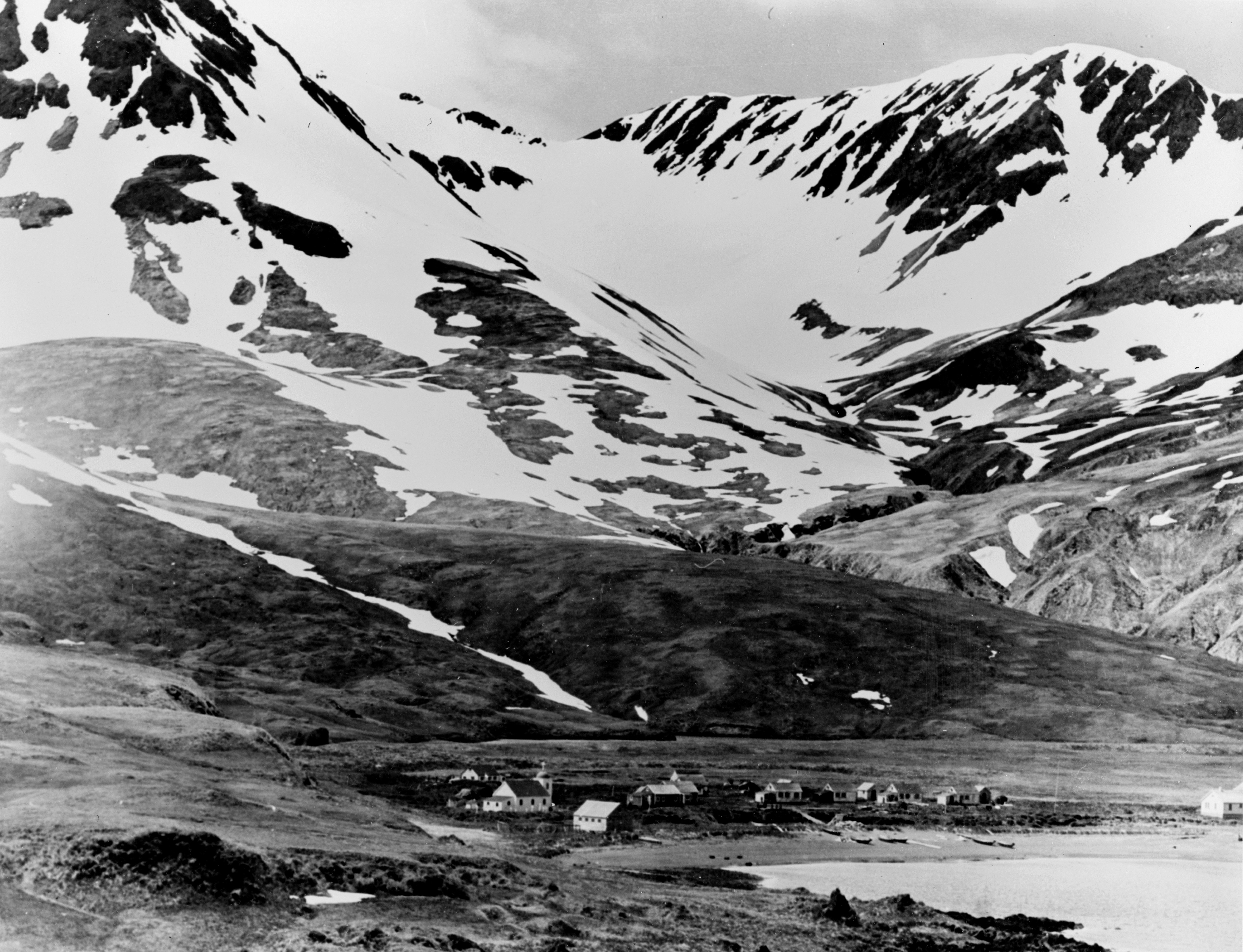|
CHAYKA
Chayka (russian: Чайка, lit. "seagull") also known as Radioteknicheskaya Systema Dalyoloiy Navigatsii abbreviated as RSDN (lit. Russian Hyperbolic Radio Navigation System) is a Russian terrestrial radio navigation system, similar to Loran-C. It operates on similar frequencies around 100 kHz, and uses the same techniques of comparing both the envelope and the signal phase to accurately determine location. The systems differ primarily in details. Chayka-Chains Chayka, like LORAN-C, uses different pulse repetition frequencies (Group Repetition Intervals, or GRIs) to allow the identification of different stations operating on the same frequencies. There are 5 Chayka chains in use: *GRI 8000 — Western (European) Russia Chayka Chain (1969, RSDN-3/10) *GRI 7950 — Eastern Russia Chayka Chain (1986, RSDN-4) *GRI 5980 — Russian-American Chayka Chain (1995) *GRI 5960 — Northern Chayka Chain (1996, RSDN-5) *GRI 4970 — North-Western Chayka Ch ... [...More Info...] [...Related Items...] OR: [Wikipedia] [Google] [Baidu] |
Loran-C
Loran-C is a hyperbolic radio navigation system that allows a receiver to determine its position by listening to low frequency radio signals that are transmitted by fixed land-based radio beacons. Loran-C combined two different techniques to provide a signal that was both long-range and highly accurate, features that had been incompatible. Its disadvantage was the expense of the equipment needed to interpret the signals, which meant that Loran-C was used primarily by militaries after it was introduced in 1957. By the 1970s, the cost, weight and size of electronics needed to implement Loran-C had been dramatically reduced because of the introduction of solid-state electronics and, from the mid-1970s, early microcontrollers to process the signal. Low-cost and easy-to-use Loran-C units became common from the late 1970s, especially in the early 1980s, and the earlier LORAN system was discontinued in favor of installing more Loran-C stations around the world. Loran-C became one ... [...More Info...] [...Related Items...] OR: [Wikipedia] [Google] [Baidu] |
Dudinka
Dudinka (russian: Дуди́нка; Nenets: Тут'ын, ''Tutꜧyn'') is a town on the Yenisei River and the administrative center of Taymyrsky Dolgano-Nenetsky District of Krasnoyarsk Krai, Russia. It used to be the administrative center of Taymyr Autonomous Okrug, which was merged into Krasnoyarsk Krai on January 1, 2007. Population: History It was founded in 1667 as a winter settlement connected to Mangazeya. In 1930 it was designated the administrative center of the Taimyr Dolgan-Nenets National Region. In 1935, the polar explorer Otto Schmidt recommended that the settlement be expanded into a town. By 1937, the port facilities and a railroad to Norilsk were completed. Town status was granted in 1951. Administrative and municipal status Within the framework of administrative divisions, Dudinka serves as the administrative center of Taymyrsky Dolgano-Nenetsky District.Law #10-4765 As an administrative division, it is, together with five rural localities, incorporated ... [...More Info...] [...Related Items...] OR: [Wikipedia] [Google] [Baidu] |
Karachev
Karachev (russian: Карачев) is an ancient town and the administrative center of Karachevsky District in Bryansk Oblast, Russia. Population: History First chronicled in 1146, it was the capital of one of the Upper Oka Principalities in the Middle Ages, until its rulers moved their seat to Peremyshl. Karachev was part of Oryol Governorate from 1796 to 1920. Its old architecture was heavily damaged during World War II. Karachev was occupied by the German Army from 6 October 1941 to 15 August 1943. Administrative and municipal status Within the framework of administrative divisions, Karachev serves as the administrative center of Karachevsky District.Law #13-Z As an administrative division, it is, together with thirty-one rural localities In general, a rural area or a countryside is a geographic area that is located outside towns and cities. Typical rural areas have a low population density and small settlements. Agricultural areas and areas with forestry typ ... [...More Info...] [...Related Items...] OR: [Wikipedia] [Google] [Baidu] |
Chayka Transmitter Slonim
Chayka transmitter Slonim is the 2nd secondary station of the Western Russian Chain RSDN-3 (GRI 8000) with a transmission power of 450 kW. Chayka transmitter Slonim, situated near Slonim, Belarus at . See also * LORAN LORAN, short for long range navigation, was a hyperbolic radio navigation system developed in the United States during World War II. It was similar to the UK's Gee system but operated at lower frequencies in order to provide an improved range ... {{Belarus-struct-stub Towers in Belarus ... [...More Info...] [...Related Items...] OR: [Wikipedia] [Google] [Baidu] |
Inta
Inta (russian: Инта́, kv, Инта) is a town in the Komi Republic, Russia. Population: History Inta was founded circa 1940 as a settlement to support a geological expedition to explore coal deposits and projecting of mines. The city's name is in the Nenets language and means 'well-watered place.' During the Soviet era, a "corrective labor camp", Intalag, was located here. Administrative and municipal status Within the framework of administrative divisions, it is, together with two urban-type settlements ( Verkhnyaya Inta and Kozhym) and twenty rural localities, incorporated as the town of republic significance of Inta—an administrative unit with the status equal to that of the districts.Law #16-RZ As a municipal division, the town of republic significance of Inta is incorporated as Inta Urban Okrug.Law #11-RZ Transportation It is served by the Inta Airport and the Kotlas–Vorkuta railway line. Inta is situated on the banks of the river Bolshoya Inta. Transmit ... [...More Info...] [...Related Items...] OR: [Wikipedia] [Google] [Baidu] |
Chayka Pulse
Chayka (russian: Чайка, lit. "seagull") also known as Radioteknicheskaya Systema Dalyoloiy Navigatsii abbreviated as RSDN (lit. Russian Hyperbolic Radio Navigation System) is a Russian terrestrial radio navigation system, similar to Loran-C. It operates on similar frequencies around 100 kHz, and uses the same techniques of comparing both the envelope and the signal phase to accurately determine location. The systems differ primarily in details. Chayka-Chains Chayka, like LORAN-C, uses different pulse repetition frequencies (Group Repetition Intervals, or GRIs) to allow the identification of different stations operating on the same frequencies. There are 5 Chayka chains in use: *GRI 8000 — Western (European) Russia Chayka Chain (1969, RSDN-3/10) *GRI 7950 — Eastern Russia Chayka Chain (1986, RSDN-4) *GRI 5980 — Russian-American Chayka Chain (1995) *GRI 5960 — Northern Chayka Chain (1996, RSDN-5) *GRI 4970 — North-Western Chayka Ch ... [...More Info...] [...Related Items...] OR: [Wikipedia] [Google] [Baidu] |
Okhotsk
Okhotsk ( rus, Охотск, p=ɐˈxotsk) is an urban locality (a work settlement) and the administrative center of Okhotsky District of Khabarovsk Krai, Russia, located at the mouth of the Okhota River on the Sea of Okhotsk. Population: History Okhotsk was the main Russian base on the Pacific coast from about 1650 to 1860, but lost its importance after the Amur Annexation in 1860. It is located at the east end of the Siberian River Routes on the Sea of Okhotsk where the Okhota and the Kukhtuy Rivers join to form a poor but usable harbor. In 1639 the Russians first reached the Pacific southwest at the mouth of the Ulya River. In 1647 Semyon Shelkovnikov built winter quarters at Okhotsk. In 1649 a fort was built (Kosoy Ostrozhok). In 1653 Okhotsk was burned by the local Lamuts. Although the Russian pioneers were skilled builders of river boats, they lacked the knowledge and equipment to build seagoing vessels, which meant that Okhotsk remained a coastal settlement and not ... [...More Info...] [...Related Items...] OR: [Wikipedia] [Google] [Baidu] |
Attu Island
Attu ( ale, Atan, russian: Атту, link=no) is an island in the Near Islands (part of the Aleutian Islands chain). It is the westernmost point of the U.S. state of Alaska. The island became uninhabited in 2010, making it the largest uninhabited island to be politically part of the United States. (archived June 25, 2017) The Battle of Attu was the site of the only World War II land battle fought in the United States. The battlefield area is a U.S. National Historic Landmark. Attu Station, a former Coast Guard LORAN station, is located at , making it one of the westernmost points of the United States relative to the rest of the country. However, since it is in the Eastern Hemisphere, being on the opposite side of the 180° longitude line of the contiguous 48 states, it can also be considered one of the easternmost points of the country (a second Aleutian Island, Semisopochnoi Island at 179°46′E, is the easternmost location in the United States by this definition). For p ... [...More Info...] [...Related Items...] OR: [Wikipedia] [Google] [Baidu] |
Taymylyr
Taymylyr (russian: Таймылыр; sah, Таймылыыр, translit=Taymılıır) is a rural locality (a '' selo'') and the administrative center of Tyumetinsky Rural Okrug of Bulunsky District in the Sakha Republic, Russia, located from Tiksi, the administrative center of the district.''Registry of the Administrative-Territorial Divisions of the Sakha Republic'' Its population as of the 2010 Census was 757,Sakha Republic Territorial Branch of the Federal State Statistics Service. Results of the 2010 All-Russian CensusЧисленность населения по районам, городским и сельским населённым пунктам(''Population Counts by Districts, Urban and Rural Inhabited Localities'') down from 900 recorded during the 2002 Census. Geography Taymylyr lies north of the Arctic Circle, on the left bank of the Olenyok River, downstream of its confluence with the Kelimyar. The nearest settlement is Ust-Olenyok located further downrive ... [...More Info...] [...Related Items...] OR: [Wikipedia] [Google] [Baidu] |
Pankratiev Island
Novaya Zemlya (, also , ; rus, Но́вая Земля́, p=ˈnovəjə zʲɪmˈlʲa, ) is an archipelago in northern Russia. It is situated in the Arctic Ocean, in the extreme northeast of Europe, with Cape Flissingsky, on the northern island, considered the easternmost point of Europe. To Novaya Zemlya's west lies the Barents Sea and to the east is the Kara Sea. Novaya Zemlya consists of two main islands, the northern Severny Island and the southern Yuzhny Island, which are separated by the Matochkin Strait. Administratively, it is incorporated as Novaya Zemlya District, one of the twenty-one in Arkhangelsk Oblast, Russia.Law #65-5-OZ Municipally, it is incorporated as Novaya Zemlya Urban Okrug.Law #258-vneoch.-OZ The population of Novaya Zemlya as of the 2010 Census was about 2,429, of whom 1,972 resided in Belushya Guba, an urban settlement that is the administrative center of Novaya Zemlya District. The indigenous population (from 1872 to the 1950s when it was reset ... [...More Info...] [...Related Items...] OR: [Wikipedia] [Google] [Baidu] |
Ussuriysk
Ussuriysk (russian: Уссури́йск) is a city in Primorsky Krai, Russia, located in the fertile valley of the Razdolnaya River, north of Vladivostok, the administrative center of the krai, and about from both the China–Russia border and the Pacific Ocean. Population: It was previously known as ''Nikolskoye'' (until 1898), ''Nikolsk-Ussuriysky'' (until 1935), ''Voroshilov'' (until 1957). History Medieval history The area of what now is Ussuriysk was settled by Yulou Mohe tribes. From the mid-9th century, it became Solbin-bu of the Balhae Kingdom. It is then populated by the Dōnghǎi Jurchens, under control of Liao dynasty. The city then become capital of Jīn Dynasty's Sùpín circuit (速頻路). Then it went under control of Yuan, Ming and Qing dynasties respectively and known as (). Modern era In 1866, the settlement of Nikolskoye () was founded on the area of today's Ussuriysk, named after Saint Nicholas. Due to its advantageous geographic location at t ... [...More Info...] [...Related Items...] OR: [Wikipedia] [Google] [Baidu] |



.jpg)

